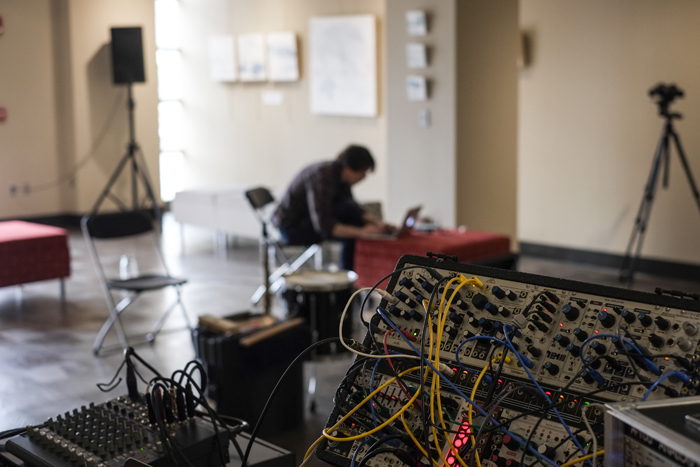
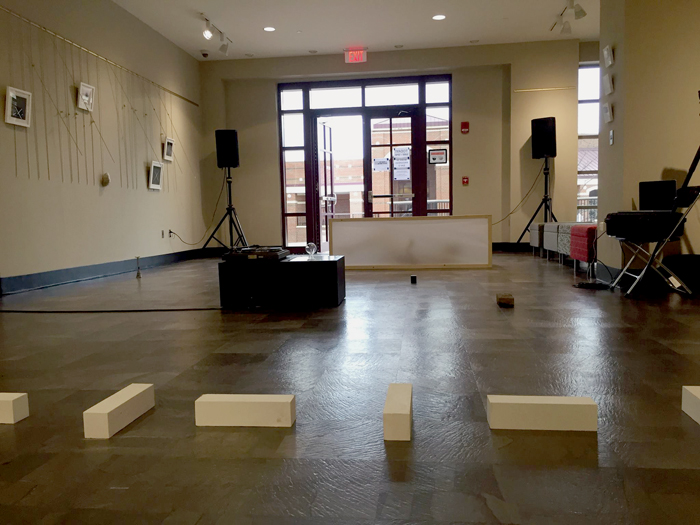
For one week Andrew Raffo Dewar moved his studio into the Ferguson Gallery inside the student center at the University of Alabama (home to 36,000 students). Every day Dewar created a new installation. At the same time, he invited a guest artist to share the space and also make a new artwork. The doors were open, the work spilled into the hallways, and work in progress was open to the public.
My two preschool boys and I biked over twice during the week. The first time we didn’t know what to expect. Dewar was working on new electronic sounds with four surround sound speakers. A painter was also working in the gallery, making new paintings influenced by the sounds. The gallery was full of drawing students and synthesizers. We tried to blend in. I usually take their “travel sketchbooks” and pencils when we go to a gallery, so they were prepared to spread out and draw something. The problem was we had to figure out what. What were we hearing? What was making the noise? Where was it coming from? We started with basic observations that adults can process quickly, but children want to investigate. And the process makes the senses more interesting for all of us. Trying to figure out which noises are coming from which speakers is surprising for them. Then we counted synthesizers and practiced identifying the colors of the cords. Their wheels started moving when I asked,”How are we going to tell dad about this music?” But they mainly just wanted to look like a college student.
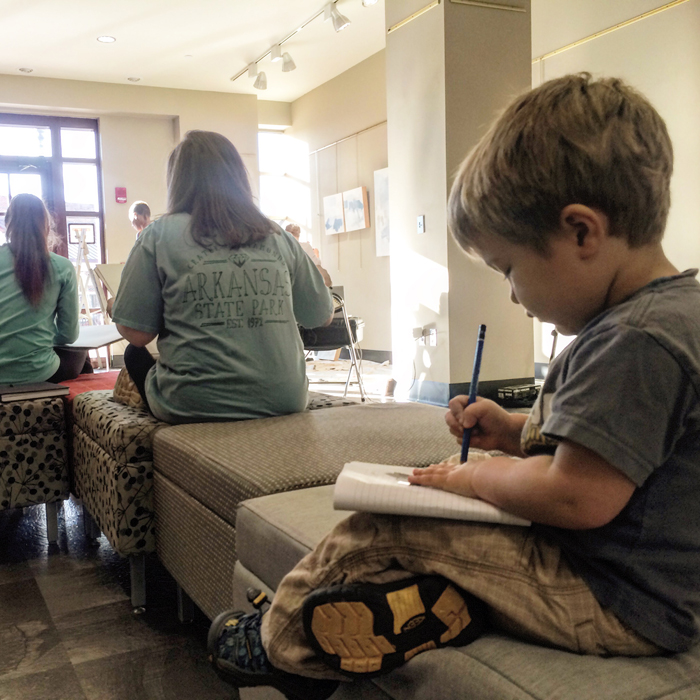
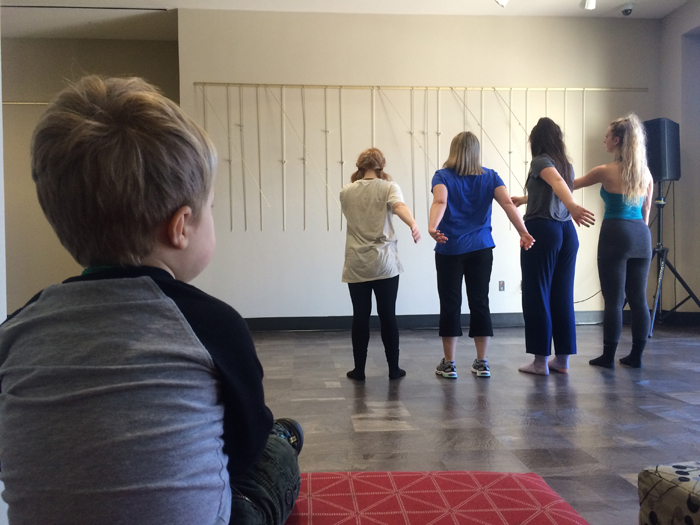
The second time we visited the studio/gallery the guest artist was choreographing and a lot of dance majors were moving. While we made ourselves comfortable and laid out our snacks, we watched the dancers improvise and Dewar catch radio waves. “What are they doing? …What’s a radio?” This time my children kept the conversation going.
At home we made some of our own electronic music with Patatap, which you can play below. Each letter on the keyboard is related to a different sound and mark (image or animation). You can compose a relatively complex piece using different combinations and sequences. The spacebar changes the colorscape. If you are looking for more Patatap inspiration, then roll this YouTube playlist of Patatap sounds.
The value of experiencing this open studio was watching individuals focus, collaborate, and work in languages that are abstract. When my two year old tried to tell his dad about the music he heard by dancing out the beats, I felt like it had been a good day.
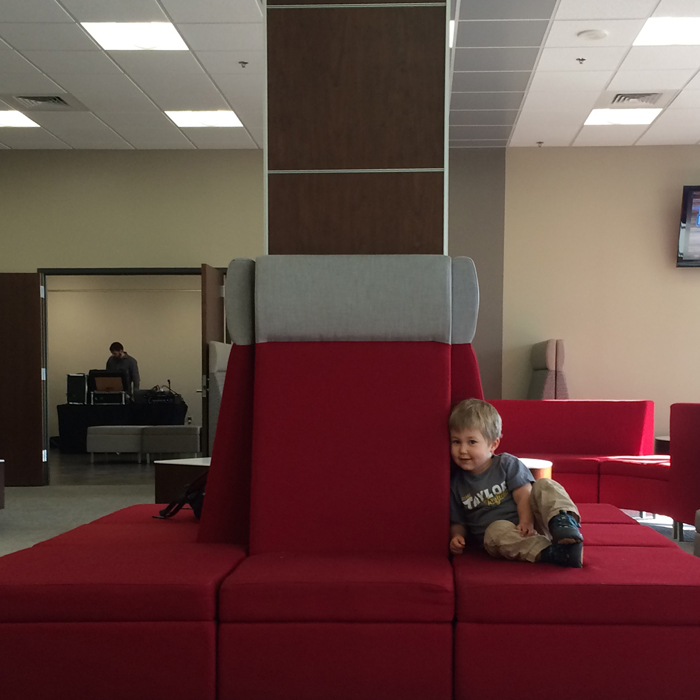
Links
Listing of UA Art Gallery Events
Weekly Round Up of Local Events
2 comments